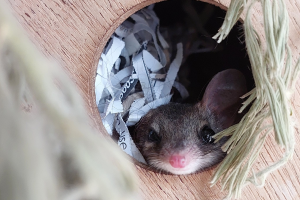WORDS: Kat Mason, Safe Sprouts
The time has come. It seemed only yesterday your child was making you carry them everywhere (along with the bike/scooter they were “too tired” to ride home on). Even going to the toilet alone without them following you just. never. happened.
But now there’s talk of your young one staying at home…alone. Say what?!?! Leaving your child at home alone is a big step in both your journeys, and one that comes with its fair share of nerves and uncertainties. But fear not! With the right preparation and know-how, you can ensure that your child stays safe and feels confident when home alone (and you don’t grow too many grey hairs at the thought of it).
When beginning to first leave your child at home alone, you could start with short practice sessions, where you might just duck out to the shops for 15 minutes. You can then gradually increase your time away as you learn to gauge their comfort and capability.
Kat shares her top 5 tips for preparing your child to stay home alone safely:
1. Know when your child is ready
Before diving into the logistics, let’s talk about readiness. Every child is different, and there’s no one-size-fits-all answer to this question. This is because the age of your child is not the only factor here. How responsible your child is, their maturity level, and their ability to follow instructions are all crucial factors. For example, you may feel your 10-year-old would be ready to stay at home, but your 14-year-old could still be lacking maturity. When beginning to first leave your child at home alone, you could start with short practice sessions, where you might just duck out to the shops for 15 minutes. You can then gradually increase your time away as you learn to gauge their comfort and capability.
2. Communication is key
Once you’ve determined that your child is ready, it’s time to lay down the ground rules. Setting clear expectations is key to ensuring a smooth experience for both you and your child. Discuss responsibilities, behaviour guidelines, and communication strategies. This could include how and when you’ll communicate with each other to “check in”. Additionally, is your child able to access a phone and use it correctly to communicate with you? Do they know how to phone other important contacts or, heaven forbid, emergency services? If you’re not ready for your child to have their own phone yet, and with landlines fossilised in museums, you could consider getting a prepaid “family mobile” to leave at home for situations like this.
3. Ensure secure environments
Now, let’s chat about the safety side. Are you able to secure your home with measures like fully functioning door locks and windows? What boundaries do you have around visitors or their friends popping over? It’s also important to create action plans for handling unexpected visitors; emphasising the importance of not opening the door to strangers and instead contacting you or a trusted adult immediately if someone does come knocking. And don’t forget, if your kiddo has access to social media, it’s also important they understand to not post that they’re home alone!
4. Teach first aid and fire safety
Equipping your child with basic first aid knowledge and gear is essential. Make sure you have a fully stocked first aid kit, and that your child knows how to use it. Teach them how to respond to common injuries and emergencies such as cuts and burns (and if you don’t know yourself, book in a first aid class together!). Don’t forget to educate them on how to use appliances correctly, and more importantly, fire safety. You don’t want to come home to 50 fire trucks outside your house after your child attempted a grilled cheese toastie. Include how to use a fire blanket or extinguisher and ensure your smoke alarms are fully functioning.
5. Emergency plans
Have your child prepared for larger scale disasters such as bushfires and floods, especially if you live in prone areas. If you haven’t already, make sure a plan is set out in place for these types of emergencies- and involve your young one in its development. Check that your child knows how to access or receive weather warnings. Develop evacuation plans with designated meeting points and emergency contacts. Discuss strategies for different scenarios and ensure everyone knows what to do in the case of an emergency. Being prepared saves lives!
Key points to remember:
- Age is not the only factor when it comes to home independence. Maturity and capability are just as important!
- Your child’s safety is the top priority. Make sure your home is secured, that your young one can call for help in an emergency, apply basic first aid, and can follow any emergency action plans
For more information:






